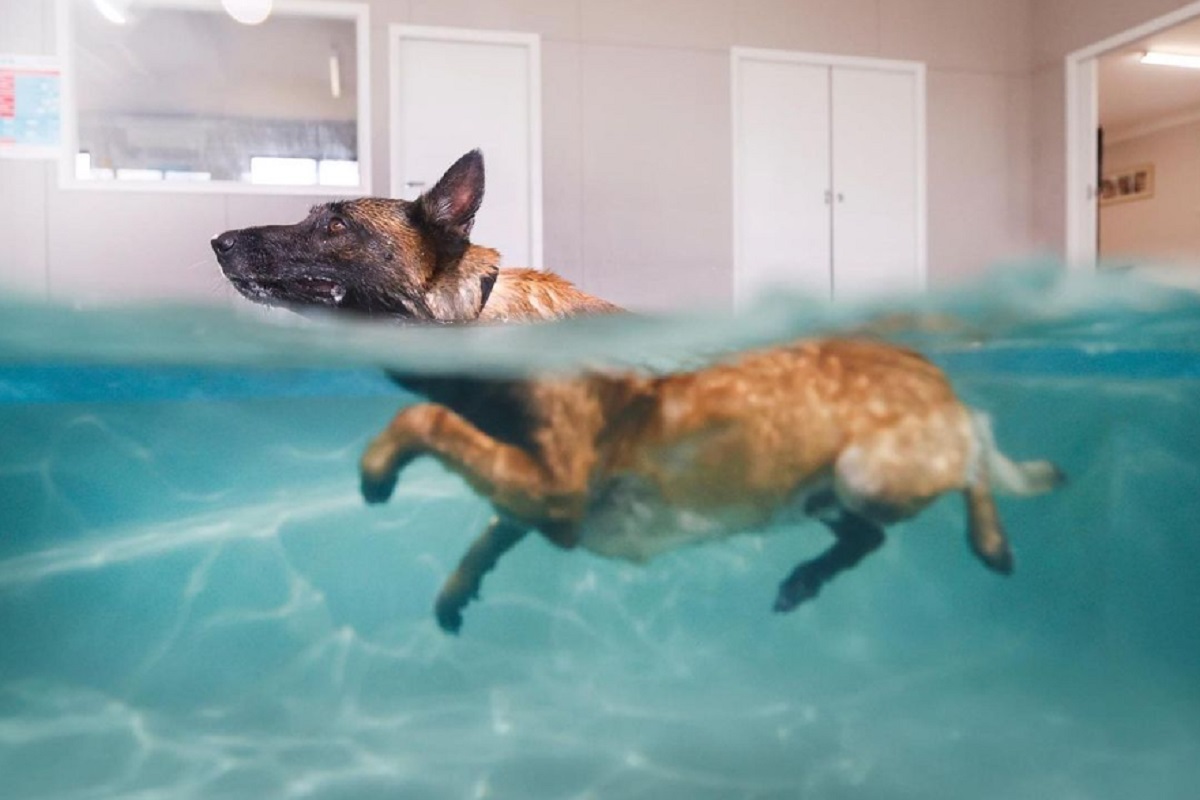Sharon Osmond, Founder of K9 Swim Hydrotherapy and Wellness Centre, discusses the benefits of hydrotherapy and the challenges of increasing awareness among veterinary professionals.
The word hydrotherapy is a Greek word meaning ‘water healing’ and has been widely recognised for its benefits and great results in the rehabilitation of our pets. However, there needs to be more awareness among the veterinary industry about the benefits of hydrotherapy and how it can contribute greatly to a veterinary rehabilitation treatment plan.
Exercise in water is beneficial for pain relief, joint mobility, strengthening, and balance. It assists in osteoarthritis, post-surgery recovery, weight loss, emotional and psychological states, training, and conditioning.
At K9 Swim Hydrotherapy Centre we have the benefit of having an indoor heated pool and an underwater treadmill, both of which we use regularly. This gives us the advantage of deciding which one is more beneficial to our patients, and we can tailor their treatment plan accordingly.
Hydrotherapy allows for non-weight-bearing exercise, which can help weak, paralyzed, or neurologically compromised dogs in order to allow them to stand and be upright in water. It reduces the stress and impact on joints as the dog moves through the water.
The height of the water impacts the buoyancy – more water, more buoyancy. This creates resistance as moving in water is slower; it strengthens muscles and gives a cardiovascular workout. Due to the water density, it is four times higher than walking on land.
The deeper the dog is in the water, the greater the constant force of the water pressing against the dog (hydrostatic pressure), which can help with reducing swelling in a limb as it increases blood circulation.
Hydrotherapy is one of the fastest-growing industries in veterinary rehabilitation and has been especially popular in the USA, UK, and Europe for many years. Australia is behind in many aspects of rehabilitation but is gradually catching up.
I find some challenges in raising awareness about hydrotherapy among veterinary professionals. Firstly, many vets are not familiar with hydrotherapy, its benefits, or even how to refer their patients to a qualified hydrotherapist, most likely due to a lack of education and training in aquatic therapy in vet school.
Secondly, many vets lack access to hydrotherapy facilities, particularly in rural areas.
Hydrotherapy can also be an expensive treatment option, as therapy sessions typically require specialised equipment and training, which can drive up the cost. Fortunately, many pet insurance products today cover hydrotherapy (possibly under rehabilitation).
I also think hydrotherapy is perceived by pet owners and vets as a ‘luxury treatment’ instead of a necessary medical intervention because it is not widely available or understood as other forms of physical therapy.
Lastly, while there is a growing body of evidence supporting the short-term benefits of hydrotherapy, there is little research on its long-term effects which may lead to some hesitation among vets to recommend hydrotherapy as a treatment option. However, I see long term effects of hydro in my patients’ re-education and improvement of gait/movement and improvement in balance and coordination. I would like to see more education and training on hydrotherapy in vet schools and
encourage veterinary organisations to offer continuing education courses on hydrotherapy. I feel it’s also important for vets to educate their clients about the benefits and costs of hydrotherapy.
We only take clients via veterinary referral. I then ask my clients to book a re-check with their vets post hydro rehab program so their vets can see the improvement, which gives the vets more business as we are referring back to them.
Incorporating hydrotherapy into a veterinary rehabilitation treatment plan will provide more for the patient.
About Sharon Osmond
A leader in canine rehabilitation, Sharon Osmond is a member of ACRA (Australian Canine Rehabilitation Association) and has numerous qualifications in nursing and animal rehabilitation.
Sharon founded K9 Swim Hydrotherapy Centre in 2013 when her dog Curzon developed arthritis. A year later, she was awarded a scholarship with the Veterinary Nurses Council of Australia (VNCA)’s Professional Development program and went on to study at the renowned Greyfriars Veterinary Rehabilitation and Hydrotherapy Referral Centre in the UK.
K9 Swim Hydrotherapy and Wellness Centre is the only one of its kind in Australasia, offering a purposely built facility focusing on rehabilitation. The facility has also recently been featured in Dr Harry’s segment on Better Homes and Gardens TV.
For more information about hydrotherapy, please email Sharon at info@k9swim.com.au.
To stay up to date on the latest industry headlines, sign up to the Pet Industry News e-newsletter.

